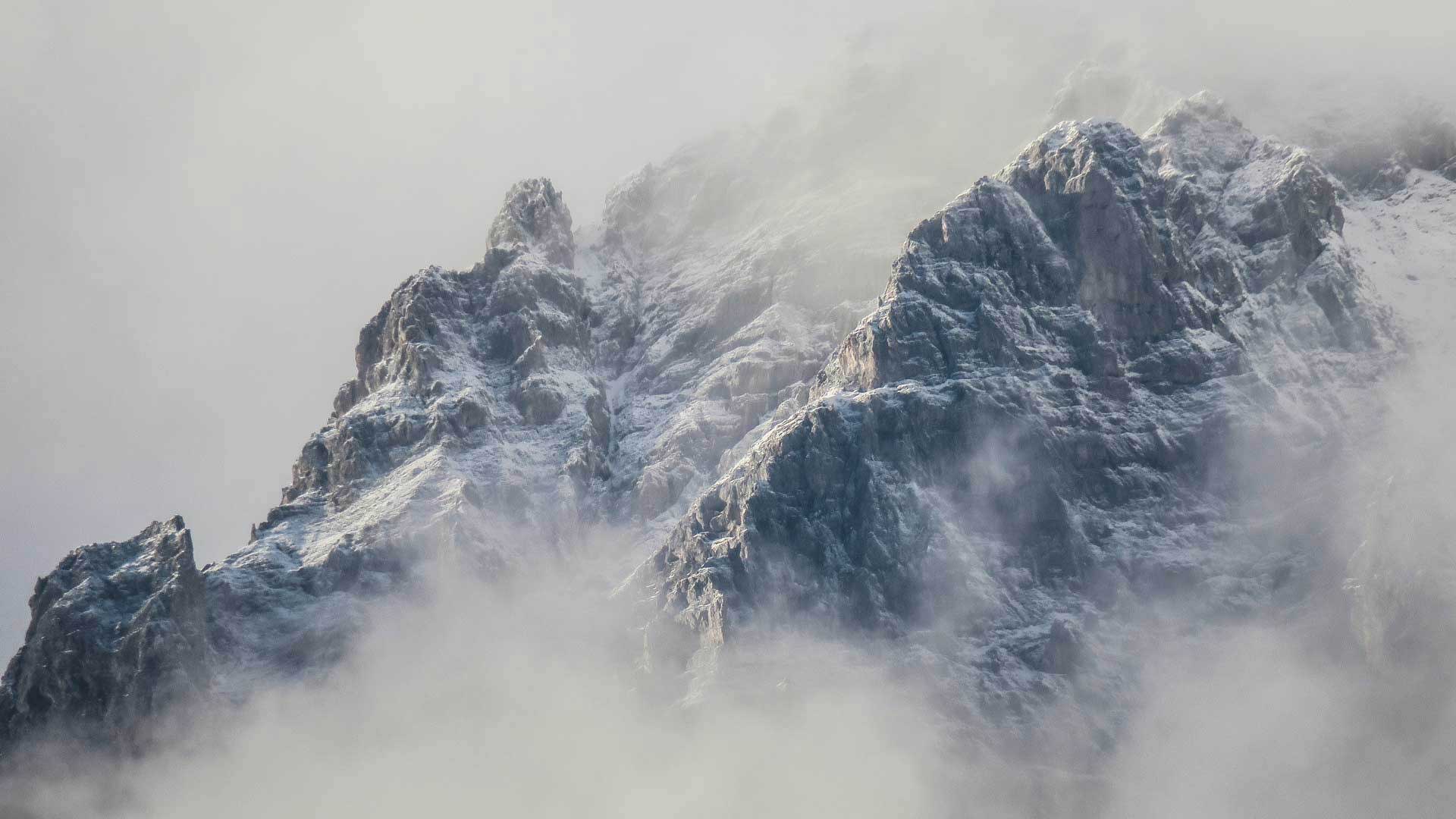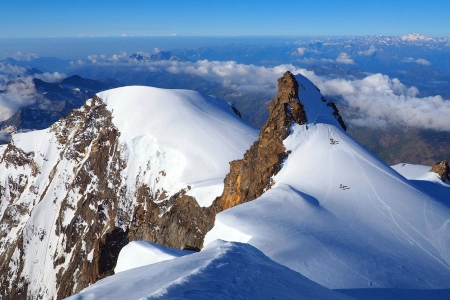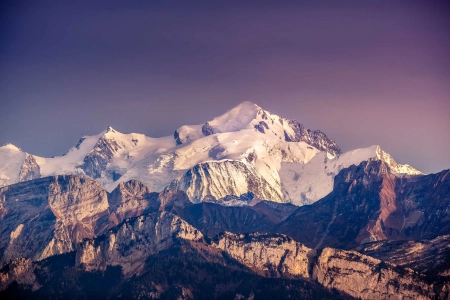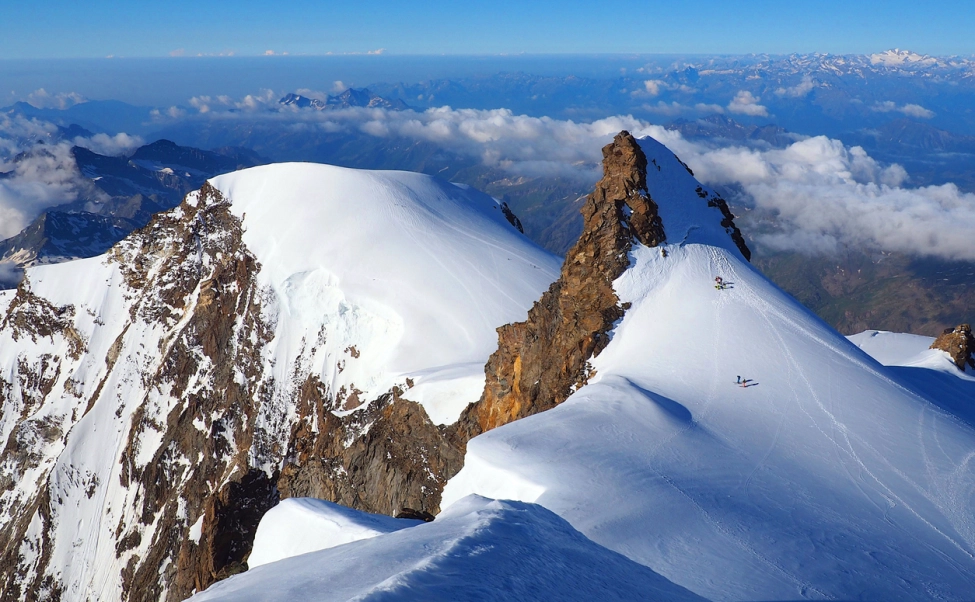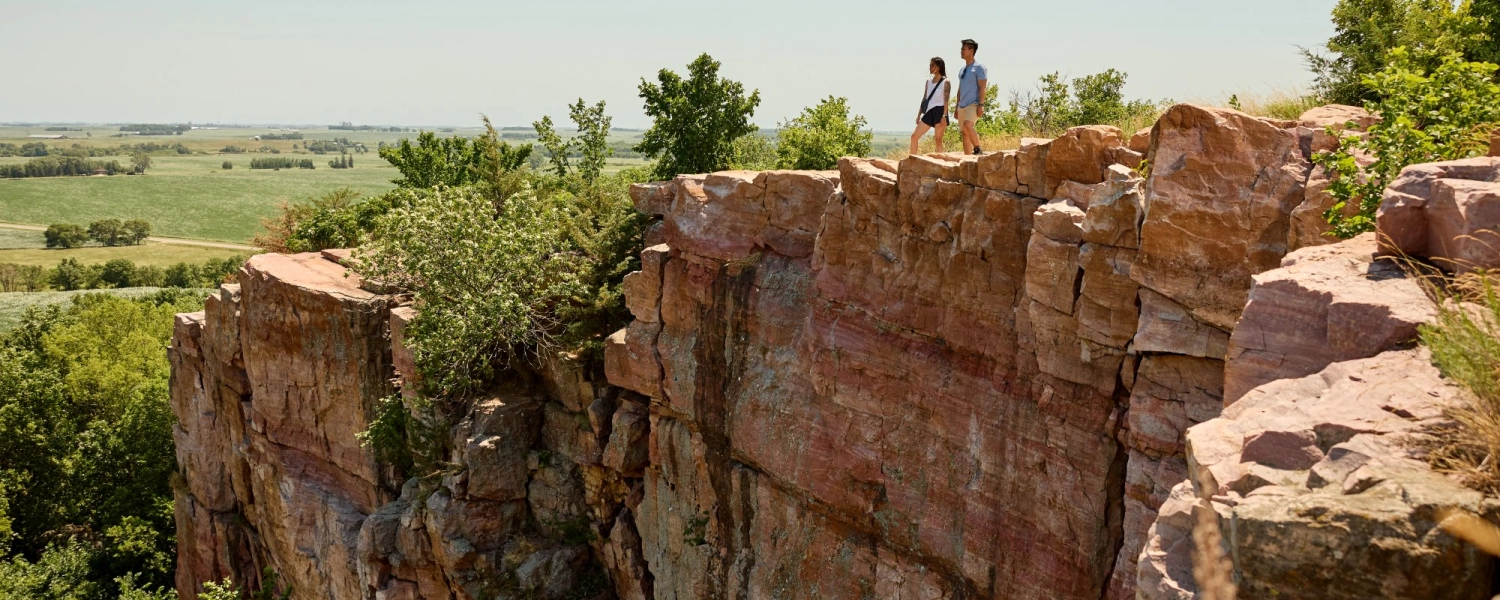- Details
- Written by: Paddy Maddison
Austria might be best known for Mozart, Sachertorte, and snowy alpine villages — but it’s also home to some of Europe’s most jaw-dropping peaks. From the legendary Grossglockner to the ice-sculpted Wildspitze, Austria’s mountains may not be the tallest in the Alps, but they punch well above their weight when it comes to adventure, history, and high-altitude drama.
Unlike neighbouring Switzerland, where the 4,000ers dominate, Austria’s highest peaks hover just below that line — making them a little more accessible without losing any of their grandeur. Whether you’re a seasoned alpinist, a ski tourer, or a summer hiker, the Austrian Alps deliver it all: vast glaciers, knife-edge ridges, and hut-to-hut trails that belong on every mountain lover’s bucket list.
So if you’ve ever wondered what the highest mountains in Austria are — here’s your complete top-ten guide, from the snowbound icons of the Hohe Tauern to the wild summits of the Ötztal Alps.
1. Grossglockner, 3,798m
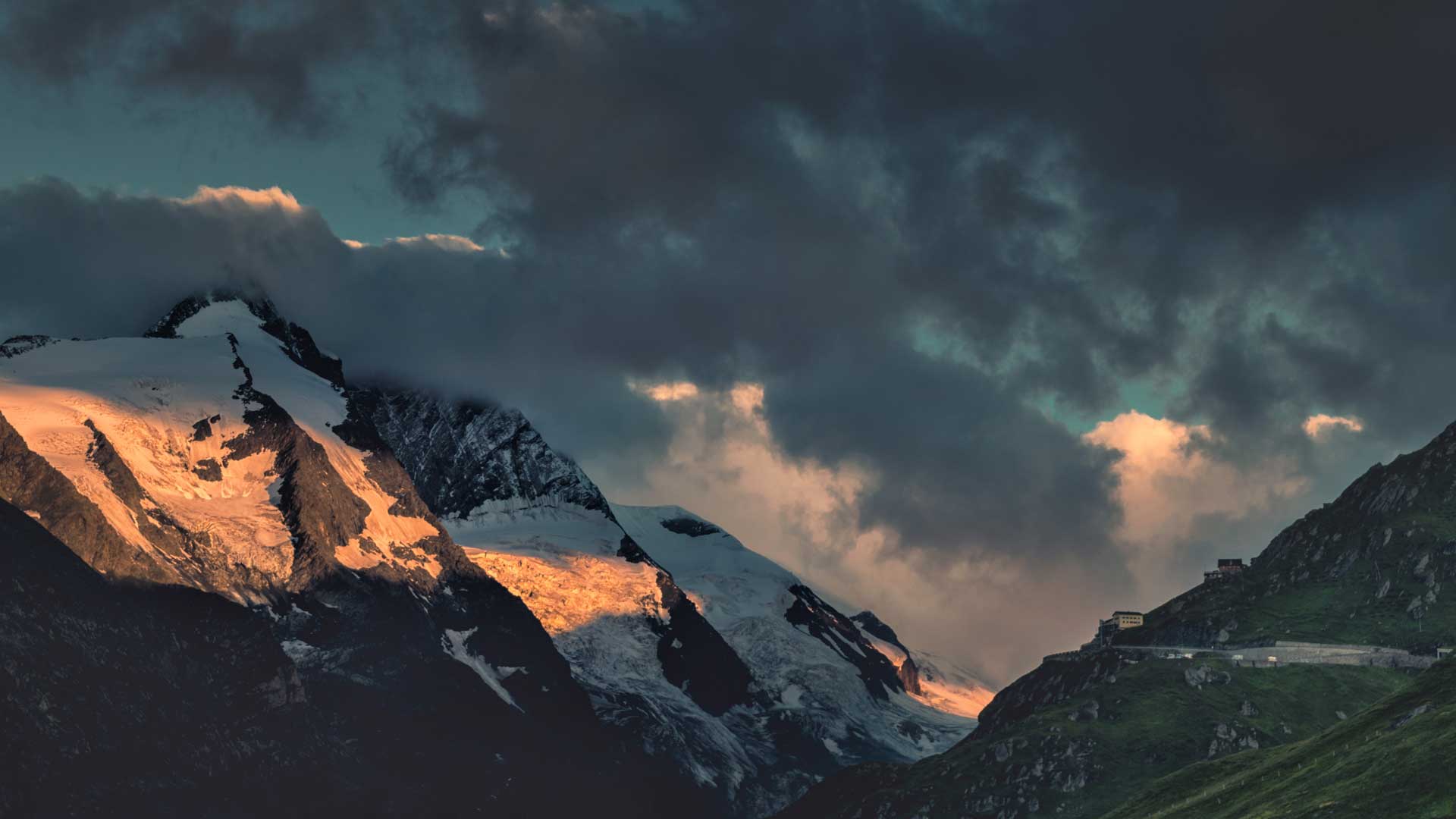
Austria’s undisputed giant and the highest mountain in the Eastern Alps, Grossglockner rises to 3,798m on the border of Carinthia and Tyrol. Its distinctive pyramid peak crowns the Hohe Tauern National Park, towering above the Pasterze Glacier — Austria’s longest.
First climbed in 1800, it’s still a rite of passage for alpine enthusiasts. Today, the Grossglockner High Alpine Road (built in 1935) gives travellers a front-row seat to this icy icon, snaking up to 2,576m with panoramic viewpoints before climbers take over.
2. Wildspitze, 3,770m

The highest mountain in the Ötztal Alps and in North Tyrol, Wildspitze is a double-summited beauty linked by sweeping glaciers. Three major glaciers (including the mighty Taschachferner) fan out from its flanks, and its 50° north face is a magnet for ice climbers.
From the summit, the view stretches so far you can glimpse Switzerland’s Finsteraarhorn on a clear day. It’s a classic mountaineering peak and a favourite for guided climbs out of Pitztal or Vent.
3. Weisskugel, 3,739m
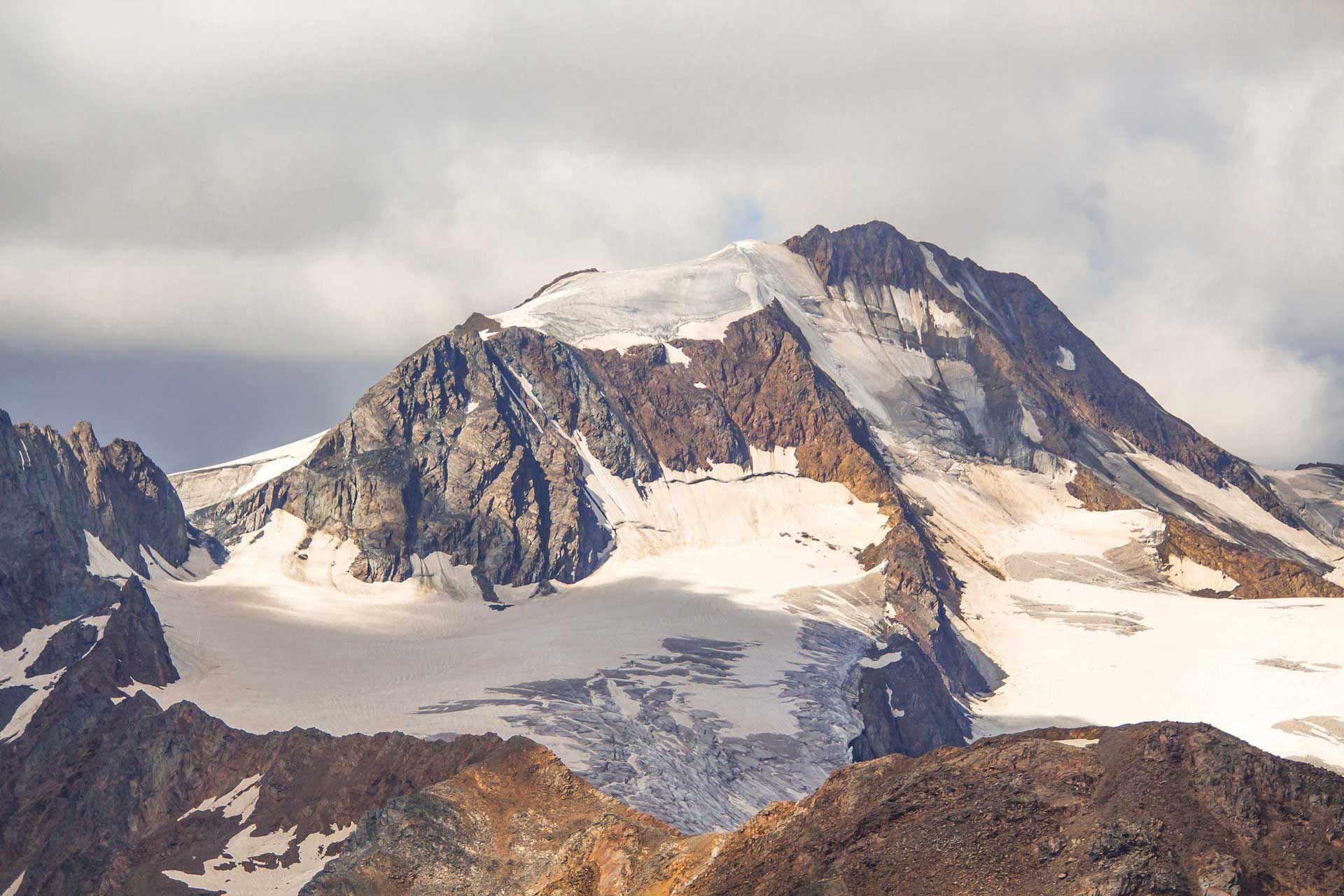
Straddling the frontier between Austria and Italy, Weisskugel (meaning “White Ball”) is the second-highest in the Ötztal Alps and one of the most striking peaks in the range. Four ridges and glaciers converge at its pyramid-shaped summit, giving it a perfectly symmetrical look.
Though less famous than Wildspitze, those who’ve climbed both often rate Weisskugel higher for sheer mountain character. It was first summited in 1861 by Joseph Anton Specht and local guides — a true old-school alpine ascent.
4. Glocknerwand, 3,721m
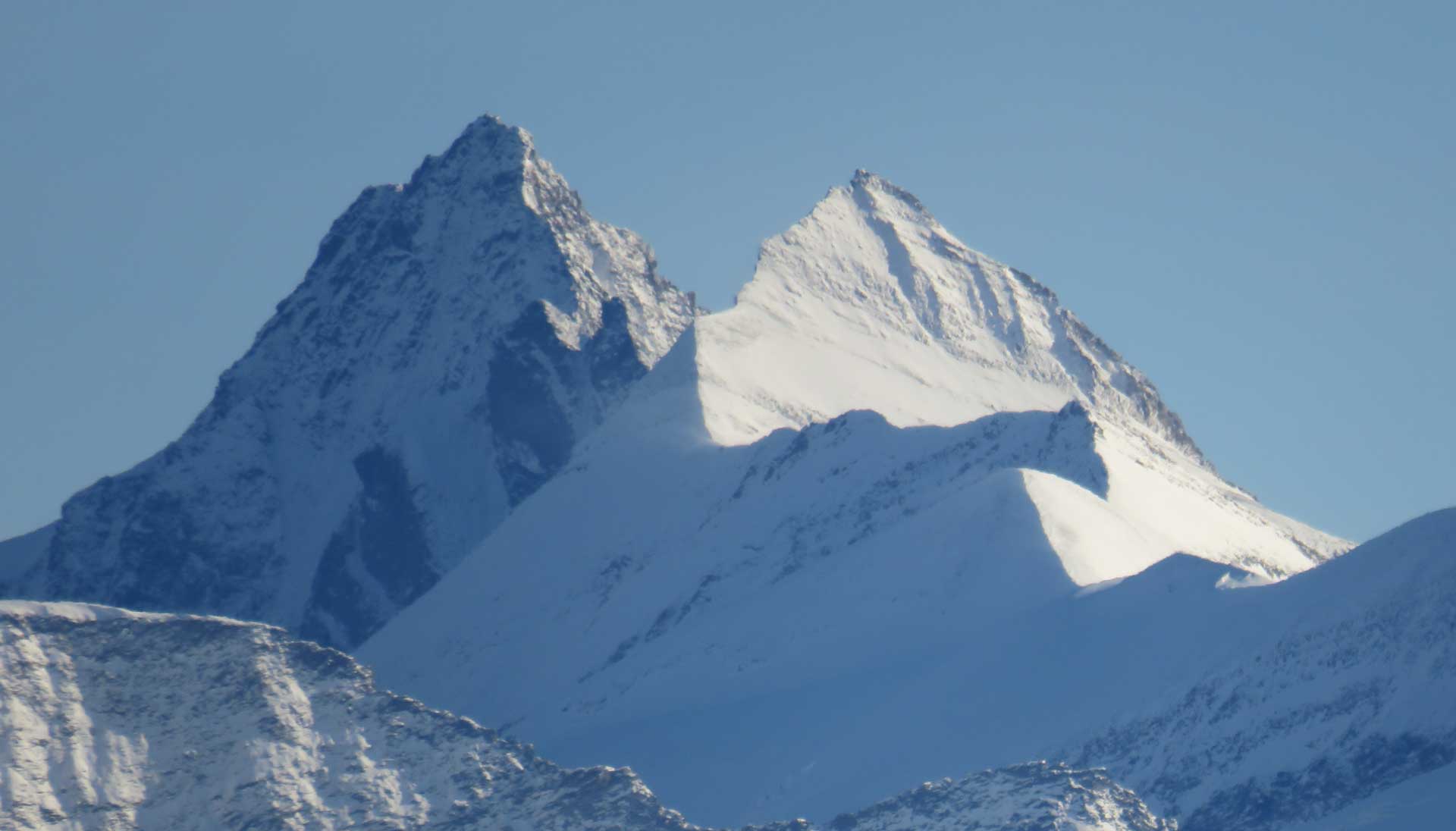
Overshadowed (literally) by its bigger brother Grossglockner, the Glocknerwand is shorter but far more treacherous. Its fan-shaped mass bristles with 400m rock faces, cornices, and snowdrifts that make it one of the most dangerous ascents in the entire Glockner Group.
Even today, it’s a serious objective best left to expert climbers — an unforgiving test piece in Austria’s alpine heartland.
5. Grossvenediger, 3,662m
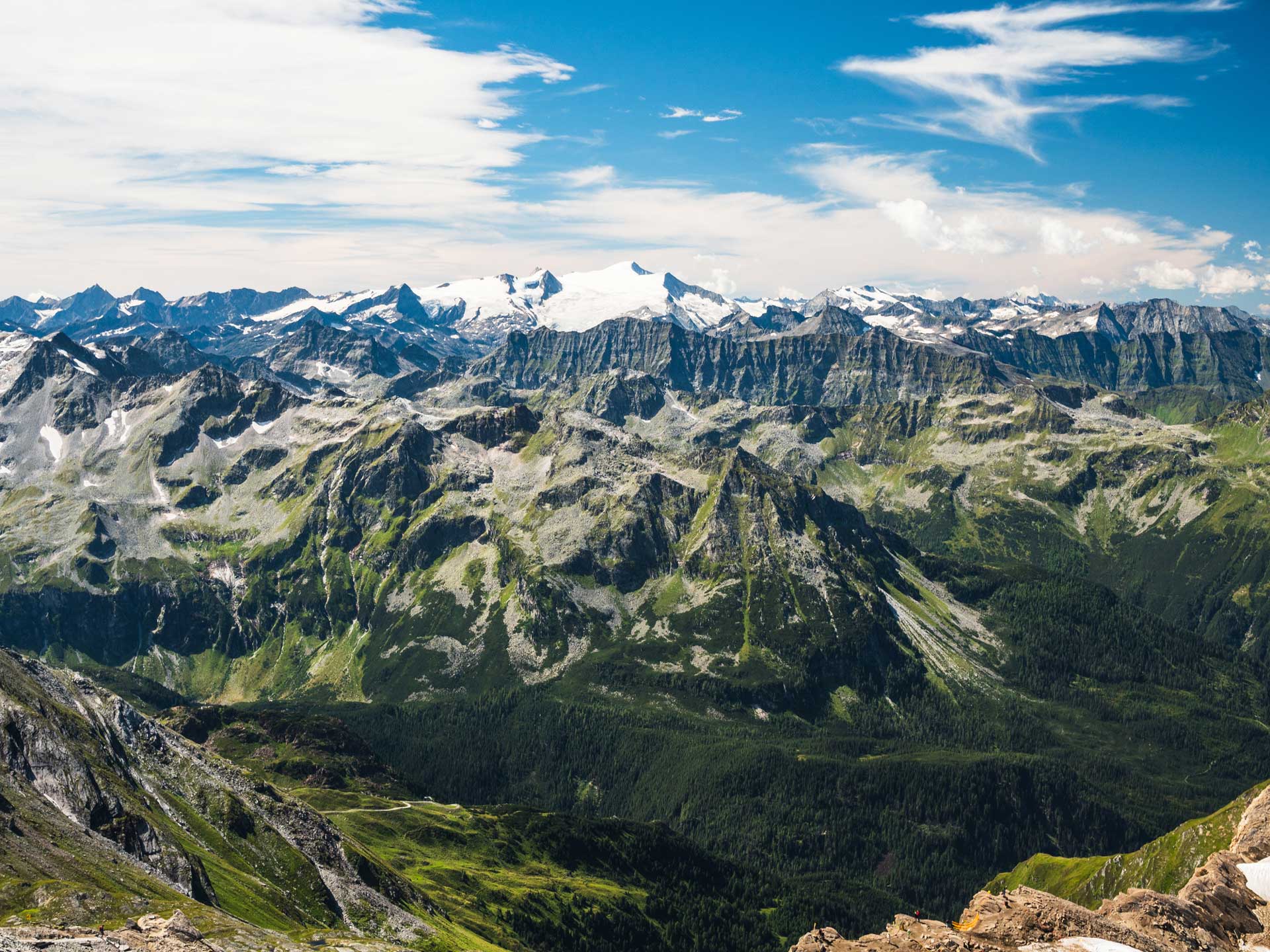
Known affectionately as the “world’s most beautiful glacier mountain,” Grossvenediger anchors the Venediger Groupon the Tyrol–Salzburg border. Covered in shining ice fields, it was first climbed in 1841 and remains a popular training peak for aspiring alpinists.
Routes from Neukirchen and Prägraten offer straightforward glacier travel, but hidden crevasses keep things interesting — and occasionally hazardous.
6. Hinterer Brochkogel, 3,635m
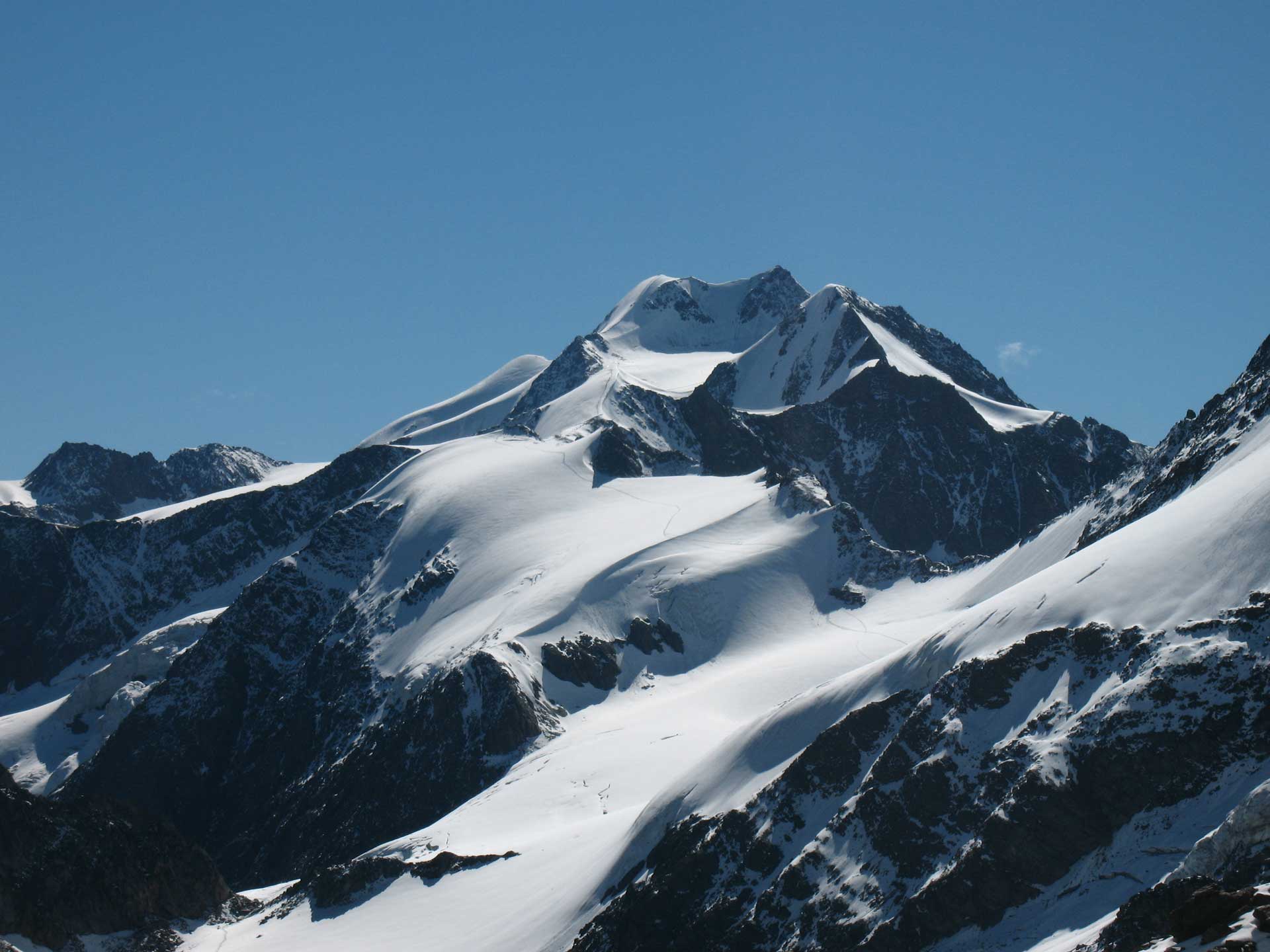
Sitting quietly among the Ötztal Alps, Hinterer Brochkogel is often climbed alongside nearby Wildspitze. Its north ridge provides excellent, sustained ice climbing at gradients up to 50°, and conditions remain good for much of the year.
From the summit, climbers can gaze across the Ötztal to Italy — a reminder of how tightly these alpine worlds connect.
7. Hintere Schwarze, 3,628m
Glaciated and wild, Hintere Schwarze straddles the Austria–Italy border with three distinct ridgelines. The mountain’s normal routes demand glacier crossings littered with crevasses, so it’s an objective for experienced climbers only.
Its first recorded ascent came in 1867 by Viennese mountaineer Ernst Pfeiffer and guides Benedict Klotz and Josef Scheiber — part of Austria’s golden age of alpinism.
8. Similaun, 3,606m
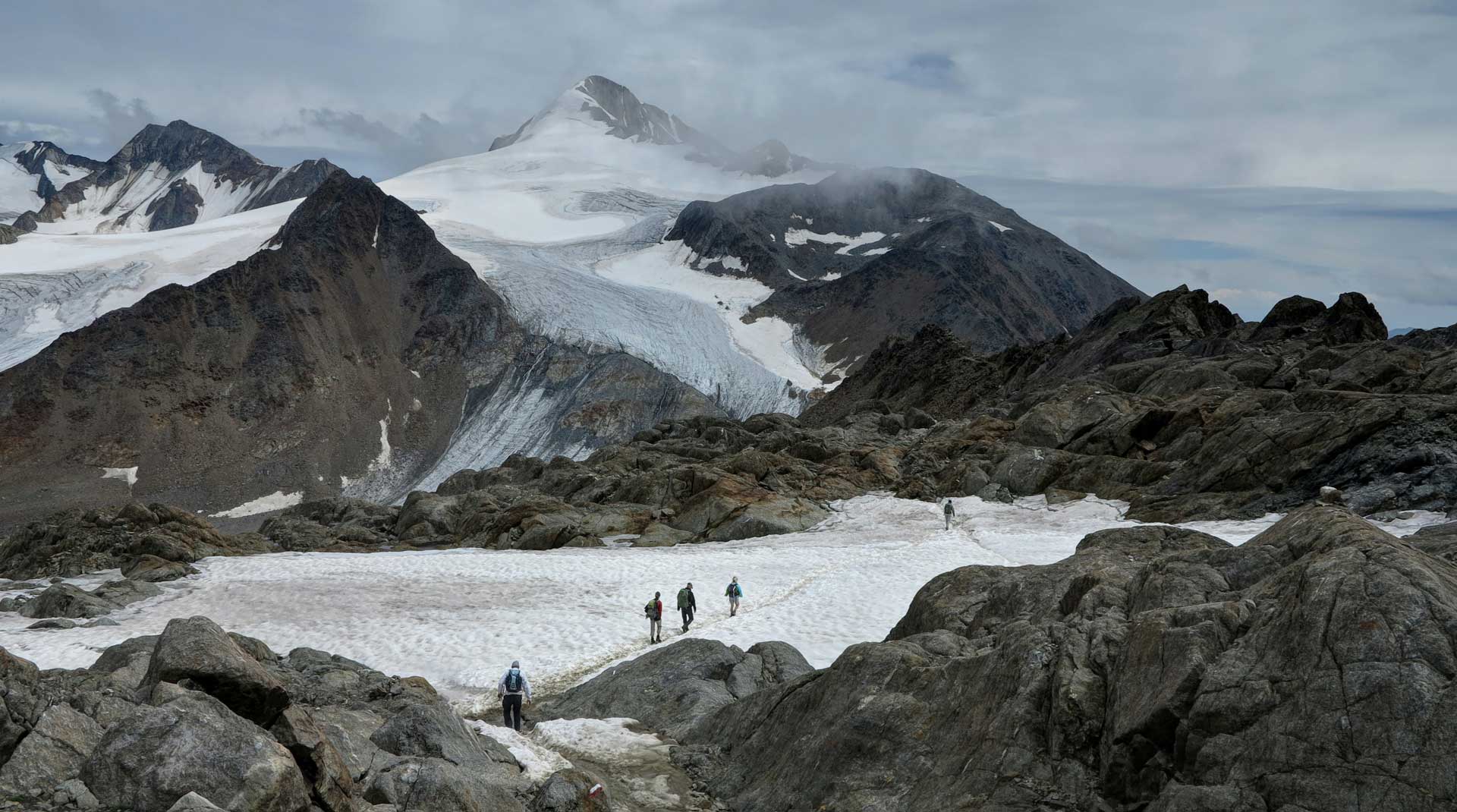
Famous less for its summit than its discovery, Similaun is where hikers Helmut and Erika Simon found Ötzi the Iceman in 1991 — a Copper Age traveller preserved in ice for over 5,000 years.
Aside from its archaeological claim to fame, the Similaun offers scenic climbs from the Similaun Hut, with views stretching across the Schnalskamm ridge and deep into Italy’s South Tyrol.
9. Vorderer Brochkogel, 3,565m
Often paired with Hinterer Brochkogel, the Vorderer Brochkogel rises gracefully above the Ötztal Valley. It’s a popular objective for less technical alpinists thanks to its moderate 45° gradients and accessible routes from the Breslauer Hut.
Those who make the summit are rewarded with expansive views of the Ortler Range and Wildspitze.
10. Grosses Wiesbachhorn, 3,564m
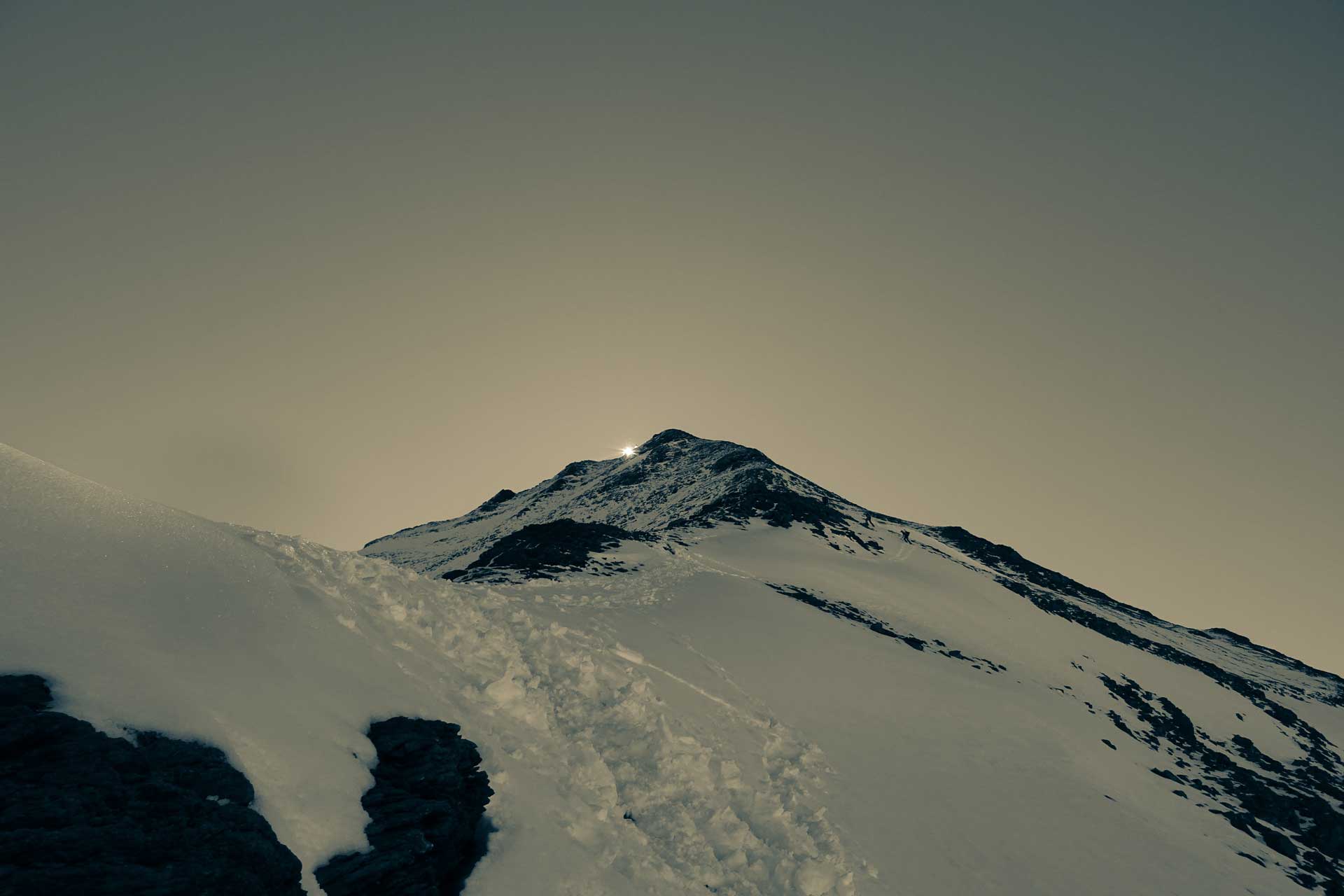
The Grosses Wiesbachhorn is one of the Hohe Tauern’s most elegant mountains — so much so that early climbers once mistook it for Austria’s highest. Its sweeping pyramid profile and panoramic summit views of the Grossglockner and Kaprun Valley make it a classic alpine climb.
The normal route is relatively easy, making it a good introduction to Austria’s 3,000ers. Notably, during the first ascent of its northwest face, climbers Fritz Rigele and Willo Welzenbach became the first to use ice screws as progression aids — a technique that changed alpine climbing forever.
The Best of the Rest
If you’re still chasing altitude, there are plenty more peaks just shy of the top 10:
-
Hochalmspitze (3,360m) – Known as the “Tauern Queen,” this granite beauty in Carinthia is both aesthetic and accessible.
-
Schrankogel (3,496m) – A hidden gem of the Stubai Alps, popular among ski tourers.
-
Hoher Sonnblick (3,106m) – Home to one of Europe’s highest weather observatories, offering a fascinating blend of science and summit adventure.
Alpine Inspiration
From the crevassed glaciers of the Ötztal to the glittering ridges of the Hohe Tauern, Austria’s highest mountains are a blend of challenge, beauty, and history. You can climb, ski, or simply admire them from the Grossglockner High Alpine Road — one of Europe’s most scenic drives.
If you’re drawn to trails as much as summits, don’t miss our guide to walking holidays in Austria — the best hiking trails. It’s perfect when you want alpine vistas without crampons.
From the crevassed glaciers of the Ötztal to the glittering ridges of the Hohe Tauern, Austria’s highest mountains are a blend of challenge, beauty, and history. You can climb, ski, or simply admire them from the Grossglockner High Alpine Road — one of Europe’s most scenic drives.
If you’re drawn to trails as much as summits, don’t miss our guide to walking holidays in Austria — the best hiking trails. It’s perfect when you want alpine vistas without crampons.
********** Image of Glocknerwand used under the Creative Commons Attribution-Share Alike 4.0 International license. Image of Hinterer Brochkogel used under the Creative Commons Attribution-Share Alike 3.0 Unported license.

